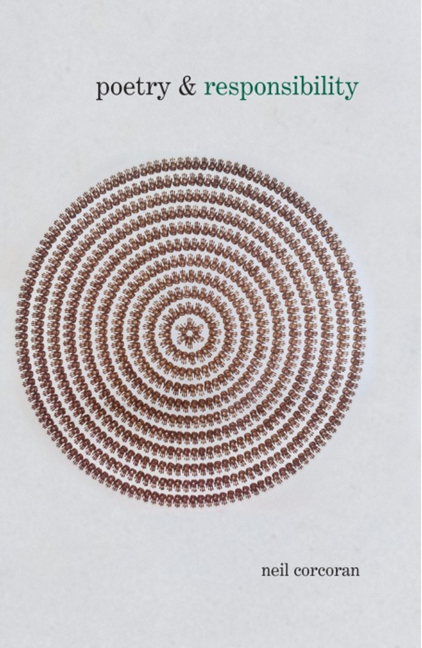Book contents
- Frontmatter
- Dedication
- Contents
- Acknowledgements
- Introduction: The Responsibilities of Poetry
- PART I
- PART II
- 4 W. B. Yeats's ‘Among School Children’: The Poem and its Critics
- 5 Question Me Again: Reflections on W. B. Yeats and Seamus Heaney
- 6 The Same Again? Louis MacNeice's Repetitions
- 7 The Celebration of Waiting: Moments in the History of Modern Irish Poetry and the Visual Arts
- 8 The Pools of Shiloh: On Paul Muldoon's ‘Our Lady of Ardboe’
- PART III
- Notes
- Index
7 - The Celebration of Waiting: Moments in the History of Modern Irish Poetry and the Visual Arts
from PART II
- Frontmatter
- Dedication
- Contents
- Acknowledgements
- Introduction: The Responsibilities of Poetry
- PART I
- PART II
- 4 W. B. Yeats's ‘Among School Children’: The Poem and its Critics
- 5 Question Me Again: Reflections on W. B. Yeats and Seamus Heaney
- 6 The Same Again? Louis MacNeice's Repetitions
- 7 The Celebration of Waiting: Moments in the History of Modern Irish Poetry and the Visual Arts
- 8 The Pools of Shiloh: On Paul Muldoon's ‘Our Lady of Ardboe’
- PART III
- Notes
- Index
Summary
Despite the best efforts of Kingsley Amis, who notoriously said in 1955 that ‘nobody wants any more poems about paintings’, poetry's engagement with the visual arts has been constant since the Imagism of the early twentieth century in which modernism first conceived itself, and conceived of itself, as painterly in its very self-definition. Ekphrasis – poetry about visual representations – has been endemic to modern poetry and has attracted a large body of critical and theoretical activity. Modern Irish poetry, which has W. B. Yeats at its origins, and is still in many ways shadowed by him, has the relationship consequently almost programmed into its DNA. The son of a painter and the brother of a great painter, Yeats himself trained briefly in an art school. Both his poetry and prose frequently refer to painting and sculpture, and the first item in his Oxford Book of Modern Verse in 1936 is a ‘free verse’ lineation of Walter Pater's famous passage on ‘La Gioconda’ in The Renaissance. ‘Only by putting it in free verse,’ says Yeats, ‘can one show its revolutionary importance’; but the extremely undistinguished free verse that results, which Yeats is ill-advised to advertise so recklessly, may be allowed, rather, to indicate his sense of the inextricability of poetry and painting in the foundational aesthetics of modernity.
Yeats is fascinated early in his life by the Pre-Raphaelites, notably by Dante Gabriel Rossetti, a painter who sometimes illustrated poems such as his sister Christina Rossetti's Goblin Market and who was also an outstanding ekphrastic sonneteer. He is permanently fascinated by Blake, whose poetry and painting are deeply intertwined, and in 1893 he edited, with Edwin Ellis, a three-volume collection of Blake's works. The painters of the Italian Quattrocento figure in major poems of Yeats's, including ‘Leda and the Swan’ and ‘Among School Children’. His conversion by Hugh Lane to the French Impressionists led to one of the major controversies of Yeats's life and is one of the circumstances behind the bitterness of his poem ‘September 1913’ with its castigating refrain, ‘Romantic Ireland's dead and gone, / It's with O'Leary in the grave’.
- Type
- Chapter
- Information
- Poetry & Responsibility , pp. 107 - 124Publisher: Liverpool University PressPrint publication year: 2014



